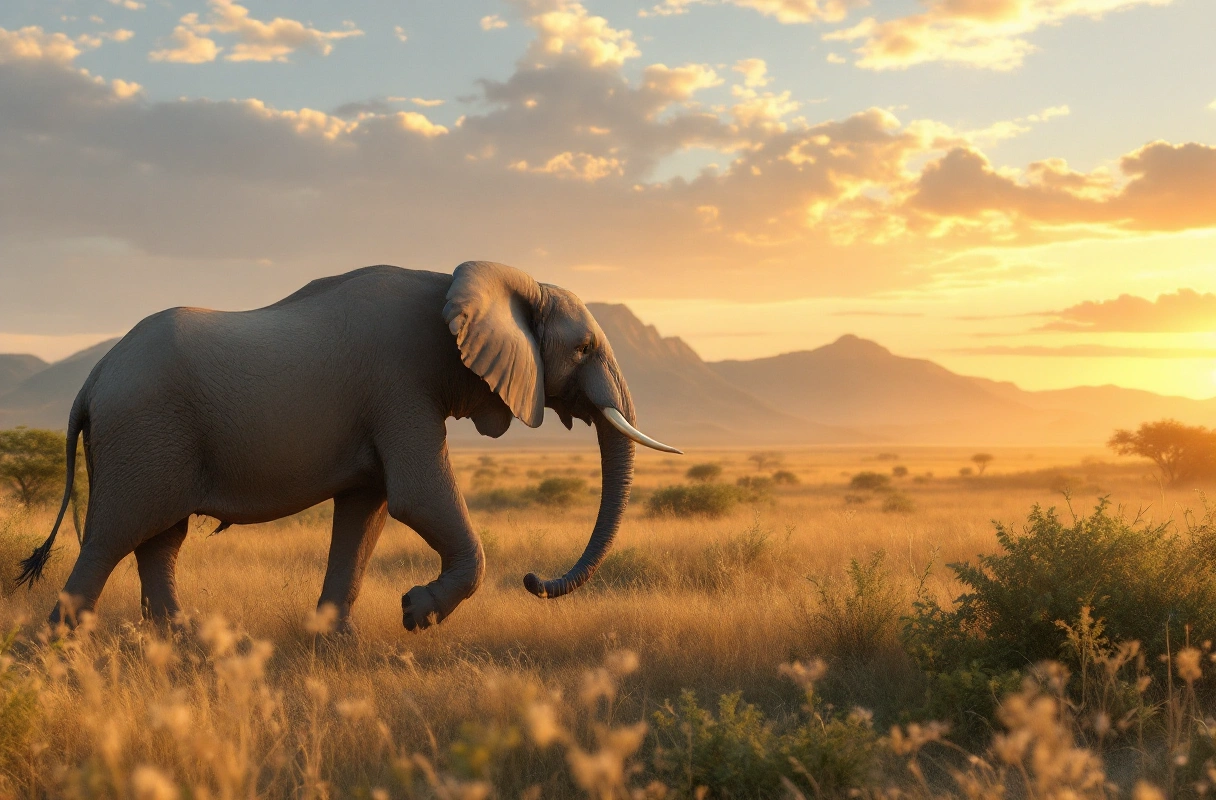
Africa is often referred to as the cradle of humanity, but it is also home to an extraordinary array of wildlife that captivates nature enthusiasts and adventurers alike. The continent's vast landscapes, from savannas to rainforests, host a plethora of unique species, each adapted to their environment in remarkable ways. In this article, we will explore the fascinating world of African animals, including lesser-known species and the best times of year to see wildlife in their natural habitats.
As we delve into the rich biodiversity of Africa, we will also highlight the importance of responsible wildlife experiences that not only enhance our understanding but also contribute to conservation efforts. Whether you are planning a safari or simply looking to expand your knowledge, this guide will provide valuable insights into the majestic wildlife of Africa.

Africa's wildlife is among the most diverse in the world, featuring an impressive array of species ranging from the iconic Big Five—lions, elephants, buffalo, leopards, and rhinoceroses—to countless birds, reptiles, and insects. This diversity is largely attributed to the continent's varied ecosystems, which include deserts, grasslands, mountains, and wetlands.
While the Big Five often steal the spotlight, it is essential to recognize the multitude of other fascinating species that inhabit Africa. For example:
The diversity does not stop there. Africa is also home to unique species such as the aardvark, the African wild dog, and the pangolin, all of which play vital roles in their ecosystems.
Many misconceptions surround African animals, often fueled by sensational media portrayals. For instance, while lions are often viewed as fierce predators, they face significant threats from habitat loss and poaching. Similarly, elephants, revered for their intelligence, are endangered due to ivory trade and human-wildlife conflict.
Understanding these realities is crucial for anyone interested in wildlife experiences. Responsible tourism can help mitigate these issues, providing a sustainable source of income for conservation efforts while fostering a deeper appreciation for these magnificent creatures.

When planning a wildlife experience in Africa, timing can significantly impact your chances of seeing various species. Different animals are more active during specific seasons, and understanding these patterns can enhance your adventure.
Dry Season (May to October):
Wet Season (November to April):
Specific Events:
To maximize your chances of encountering African animals, consider the following tips:

Engaging with African wildlife through responsible tourism practices can have a profound impact on conservation efforts. When done correctly, wildlife experiences can contribute to protecting these magnificent creatures and their habitats.
While planning your wildlife experience, be mindful of these common pitfalls:
By adopting responsible practices, you can enjoy enriching wildlife experiences while contributing to the preservation of Africa's extraordinary biodiversity.
Advancements in technology have revolutionized wildlife conservation efforts in Africa. From tracking animal movements to anti-poaching initiatives, technology plays a crucial role in safeguarding African animals.
As technology continues to evolve, its integration into wildlife conservation will likely expand. Innovations such as AI and machine learning are being explored to analyze data more efficiently, enabling quicker responses to threats facing African animals.
As we explore the unique types of African animals and the best times to see them, we recognize the importance of fostering a passion for nature and wildlife. Engaging with the natural world not only enriches our lives but also empowers us to become advocates for conservation.
Banana Slug Club is dedicated to nurturing this enthusiasm for nature, science, and wildlife. By providing resources and educational opportunities, we aim to inspire the next generation of conservationists and nature lovers.
For those excited about learning more about photographing African animals and the incredible biodiversity our planet has to offer, we invite you to explore our website for engaging content and resources. Whether you are a student, teacher, or simply a curious nature enthusiast, Banana Slug Club is here to support your journey into the wild.
In conclusion, understanding and appreciating African animals is not just about witnessing their beauty; it is about recognizing our role in their conservation. Join us in our mission to protect these remarkable creatures and their habitats while cultivating a deeper connection with nature. Visit our website or contact us for more information on how you can get involved and make a difference.
Get free resources, early access to new features and updates.
No spam. Just fun educational emails!